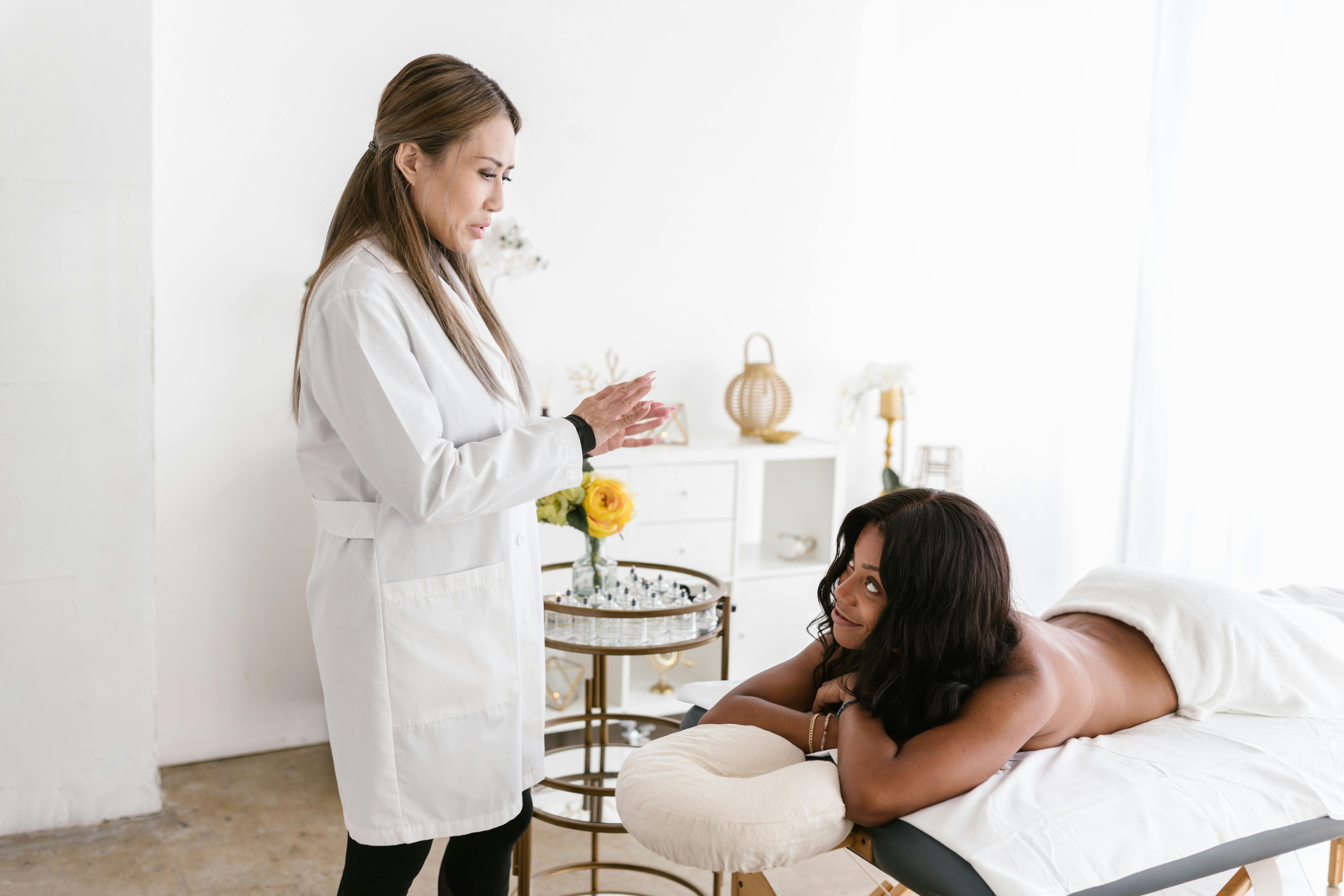Updated: 07/21/2025
Imagine constantly feeling on edge, worried about losing the person you care about the most. Anxious attachment and jealousy often go hand in hand, creating a tangled web of emotions that can strain relationships. This article explores the impact of anxious attachment on jealousy, shedding light on the reasons behind these feelings and offering practical tips for managing them. Whether you struggle with anxious attachment yourself or have a loved one who does, this piece is here to provide guidance and understanding in a friendly and empathetic tone.

Causes of Anxious Attachment
Childhood Trauma
One of the primary causes of anxious attachment is childhood trauma. Traumatic experiences during childhood, such as abuse, neglect, or unstable environments, can significantly impact a person’s ability to form secure attachments later in life. These experiences may create feelings of fear, insecurity, and an overwhelming need for validation and reassurance.
Inconsistent Parental Care
A lack of consistent and nurturing parental care can greatly contribute to anxious attachment. When a child does not receive consistent love, attention, and care from their primary caregivers, they may develop a fear of abandonment and a constant need for reassurance. This inconsistency can create a belief that love and support are unpredictable, leading to anxious attachment patterns in relationships.
Fear of Abandonment
Another significant cause of anxious attachment is the fear of abandonment. This fear often stems from previous experiences of rejection, loss, or neglect. Individuals with anxious attachment often have an intense fear that their partners will leave them or find someone better, resulting in feelings of insecurity, clinginess, and obsessive thoughts about their relationship.
Understanding Jealousy
Definition of Jealousy
Jealousy is an intense emotional response triggered by the perceived threat of losing someone’s affection, attention, or love to a third party. It involves feelings of insecurity, fear, anger, possessiveness, and a sense of competition. Jealousy can arise in various types of relationships, including romantic partnerships, friendships, and family dynamics.
Types of Jealousy
There are different types of jealousy that individuals with anxious attachment may experience:
-
Romantic Jealousy: This type of jealousy occurs when a person feels threatened by the attention or potential involvement of a romantic partner with someone else.
-
Social Jealousy: Social jealousy may arise when an individual feels envious or insecure about their social standing or perceived popularity compared to others.
-
Professional Jealousy: In the workplace, individuals with anxious attachment may experience jealousy when they fear losing recognition, promotions, or opportunities to their colleagues.
Signs of Jealousy
Some common signs of jealousy include:
- Constantly checking or monitoring your partner’s activities, messages, or social media profiles.
- Feeling a deep sense of insecurity and doubt in your relationship.
- Becoming clingy or possessive towards your partner, seeking constant reassurance of their love and commitment.
- Experiencing intense emotions of anger, sadness, or frustration when your partner interacts with others.
- Acting out, accusing your partner of infidelity or betrayal without any evidence.
The Link between Anxious Attachment and Jealousy
Insecurity and Fear of Loss
Anxious attachment and jealousy often go hand in hand due to the underlying feelings of insecurity and fear of loss. An individual with anxious attachment constantly seeks validation and reassurance from their partner to alleviate these fears. When they perceive any threats to their relationship, it triggers intense jealousy as they believe it could lead to the end of the relationship.
Hyperactive Attachment System
An anxious attachment style is characterized by a hyperactive attachment system. This means that individuals with anxious attachment have an intense need for closeness, intimacy, and connection. When their attachment system is activated, they become hyper-vigilant, constantly searching for signs of potential abandonment. This hyperactivity can amplify feelings of jealousy, as they interpret any situation as a threat to their security.
Need for Reassurance
Individuals with anxious attachment tend to rely heavily on their partner to provide reassurance and a sense of security. This need for constant reassurance can lead to jealousy when they perceive their partner’s attention or affection being directed elsewhere. They may seek validation through possessiveness, clinginess, or constantly seeking confirmation of their partner’s love and commitment.
Impact of Anxious Attachment on Jealousy
Heightened Jealousy Levels
Anxious attachment significantly amplifies jealousy levels in relationships. Due to their underlying fear of abandonment and insecurity, individuals with anxious attachment tend to be highly sensitive to any perceived threats. Even seemingly harmless actions or interactions by their partner can trigger intense jealousy reactions, leading to conflicts and distress within the relationship.
Overwhelming Emotional Responses
Anxious attachment can result in overwhelming emotional responses when confronted with jealousy triggers. The fear of losing their partner’s love or being replaced by someone else can evoke intense feelings of sadness, anger, and anxiety. These emotions can be challenging to regulate, often leading to impulsive behaviors or irrational thoughts that further strain the relationship.
Difficulty Trusting Others
Anxious attachment can contribute to difficulties in trusting others. Individuals with anxious attachment may have experienced previous betrayals or abandonment, leading them to develop a fear of being hurt again. This fear can make it challenging for them to trust their partners, even in the absence of any concrete evidence of infidelity. The lack of trust fuels their jealousy and perpetuates a cycle of insecurity within the relationship.

Navigating Jealousy in Anxious Attachments
Recognizing Triggers and Patterns
To navigate jealousy within an anxious attachment, it is crucial to recognize the triggers and patterns that lead to these emotions. By understanding what situations or behaviors tend to provoke jealousy, individuals can develop strategies to manage their reactions and communicate effectively with their partners. Self-awareness is the first step in breaking the cycle of jealousy and anxious attachment.
Building Self-Confidence
Building self-confidence is key to overcoming jealousy in anxious attachments. By developing a strong sense of self-worth and recognizing one’s own value, individuals can reduce dependency on their partners for validation. Engaging in activities that promote personal growth, focusing on individual strengths, and seeking support from friends and loved ones are ways to boost self-confidence and reduce jealousy.
Communicating Openly with Partner
Open and honest communication is essential for navigating jealousy in anxious attachments. Individuals must express their feelings and concerns to their partners. Sharing specific triggers and discussing reassurance needs can help build understanding and trust. Creating a safe space for open dialogue enables both partners to address the underlying issues and work together towards building a secure and healthy relationship.
Seeking Professional Help
Therapy and Counseling
Seeking therapy or counseling can be highly beneficial for individuals struggling with anxious attachment and jealousy. A trained therapist can help explore the underlying causes, beliefs, and patterns that contribute to these emotions. Through therapy, individuals can gain insights, develop coping strategies, and learn healthier ways of managing their attachment and jealousy concerns.
Attachment-Based Interventions
Attachment-based interventions, such as Emotionally Focused Therapy (EFT), can specifically target anxious attachment and its impact on jealousy. These interventions focus on enhancing secure attachment by helping individuals develop trust, open communication, and emotional regulation skills. Therapists trained in attachment theory can guide individuals towards healthier relationship patterns and provide tools for managing jealousy.
Self-Reflection and Growth
Engaging in self-reflection and personal growth is crucial for overcoming anxious attachment and jealousy. Taking time to understand one’s fears, insecurities, and past traumas can pave the way for healing and self-discovery. Self-help resources, such as books, podcasts, or online support groups, can provide valuable insights and guidance on developing a secure attachment style and managing jealousy effectively.

Developing Secure Attachment
Recognizing and Addressing Insecurities
Developing a secure attachment involves recognizing and addressing underlying insecurities. This requires identifying the beliefs and thought patterns that contribute to anxious attachment and challenging them. Engaging in self-reflection and seeking professional support can help individuals gain clarity on their insecurities and work towards developing a more secure sense of self.
Developing Trust and Security
Building trust and security within oneself and in relationships is essential for developing a secure attachment style. This involves creating a supportive and loving environment where both partners feel safe, valued, and respected. Learning to trust oneself and one’s instincts is equally important in cultivating a healthy and secure attachment.
Practicing Mindfulness and Self-Compassion
Practicing mindfulness and self-compassion can aid in developing a secure attachment and managing jealousy. Mindfulness allows individuals to observe their thoughts and emotions without judgment, fostering self-awareness and emotional regulation. Self-compassion involves being kind, understanding, and forgiving towards oneself, reducing self-criticism and fostering a healthier self-image.
Challenges in Overcoming Anxious Attachment and Jealousy
Deep-Seated Beliefs and Patterns
Overcoming anxious attachment and jealousy can be challenging due to deep-seated beliefs and patterns that have developed over time. These beliefs may include a fear of abandonment, worthlessness, or a lack of trust in others. Addressing and shifting these beliefs requires consistent effort, self-reflection, and possibly professional guidance to challenge and replace these negative patterns with healthier ones.
Fear of Vulnerability
Anxious attachment and jealousy often stem from a fear of vulnerability. Individuals with anxious attachment may find it difficult to let their guard down and expose their true selves, fearing rejection or abandonment. Overcoming this fear involves gradually opening up, allowing oneself to be seen and accepted by others. It requires building trust and embracing vulnerability as a pathway to deeper connection and intimacy.
Resistance to Change
Resistance to change can also hinder the process of overcoming anxious attachment and jealousy. Familiar patterns and behaviors, even if dysfunctional, can provide a sense of comfort and predictability. Breaking free from these patterns may initially feel uncomfortable and unfamiliar. It is essential to recognize and confront this resistance, understanding that change is necessary for personal growth and healthier relationship dynamics.
Supporting Individuals with Anxious Attachment
Providing Reassurance and Understanding
Supporting individuals with anxious attachment requires providing reassurance and understanding. It is essential to demonstrate empathy and acknowledge their feelings of insecurity and jealousy. Reassure them of your commitment and love, while also encouraging them to work on their personal growth and healing. Creating a safe and non-judgmental space for communication can foster trust and help alleviate their anxiety.
Encouraging Therapy and Self-Exploration
Encouraging individuals with anxious attachment to seek therapy or engage in self-exploration can be highly beneficial. Assure them that seeking professional help is not a sign of weakness, but rather an opportunity for growth and healing. Recommend resources, such as books or support groups, that align with their specific challenges. Emphasize the importance of self-reflection and personal development in overcoming anxious attachment and jealousy.
Creating a Safe and Secure Environment
Creating a safe and secure environment is crucial for supporting individuals with anxious attachment. This includes maintaining open lines of communication, honoring boundaries, and consistently demonstrating love and respect. Be patient and understanding, allowing them space to express their fears and concerns. By cultivating an environment of trust and security, you can help individuals with anxious attachment feel more valued and supported.
Conclusion
Anxious attachment and jealousy often go hand in hand, stemming from childhood trauma, inconsistent parental care, and a fear of abandonment. Understanding the link between anxious attachment and jealousy involves recognizing the underlying insecurity, hyperactive attachment system, and the need for reassurance. The impact of anxious attachment on jealousy can lead to heightened levels of jealousy, overwhelming emotional responses, and difficulty trusting others. Navigating and overcoming anxious attachment and jealousy requires recognizing triggers and patterns, building self-confidence, and communicating openly with partners. Seeking professional help, developing secure attachment, and addressing challenges are essential steps in supporting individuals with anxious attachment. By providing reassurance, encouraging therapy and self-exploration, and creating a safe and secure environment, we can help individuals overcome anxious attachment and develop healthier relationships.
